12 Ways to Open Files on a Mac
Posted on
by
Kirk McElhearn
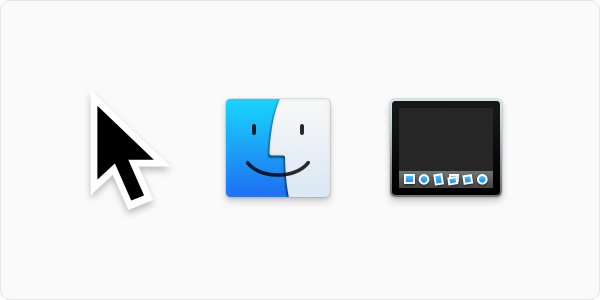
You open files every time you use your Mac, most often, probably, by double-clicking them. But did you know that there are lots of different ways to open files? You can use your mouse, your trackpad, or even your keyboard. You can open files in windows, from menus, and from dialogs. Here are a dozen ways you can open files on a Mac.
1. Double-click to Open Files
The basic way to open a file on the Mac — and on Windows as well — is to double-click a file. By default, it opens with the application that is assigned to work with its file type; so, if you have Microsoft Office on your Mac, a .docx file opens in Word, and an .xls file opens in Excel. Some file extensions are clearer about which app opens them, such as .pages or .numbers files that open with the Pages and Numbers apps. Only one app can open each file type when you double-click it, but as you’ll see below, you can open files with other apps, and you can change the default app that opens a given file type.
If you receive a file as an attachment to an email, you can open it by double-clicking it, as you would a file in the Finder.
2. Drag and Drop to Open Files
You can open a file by dragging it onto an app icon, either in a Finder window, or in the Dock. If that app can open the file, the icon will highlight, and when you drop the file the app will launch (if it’s not already running) and display the file.
3. Open Files from the Keyboard
You can also open a file from the keyboard. Select a file in a Finder window or on the Desktop, and press Command-down-arrow. As with double-clicking, the file opens with the app its file type is associated with. You can also press Command-O to open a selected file.
4. Open any File from an Open Dialog
As discussed in an article about using the Open and Save dialogs, you can open any file from an app’s Open dialog (if that app supports the file type). Just press Command-O in your app, navigate to the file, select it, and click Open or press Return.
If you want to view a file when you’re in an Open dialog, you can select and it press the space bar to view it in Quick Look.
5. Re-Open a File from the Open Recent Menu
If you’ve worked on a file in a specific app, you can re-open it from that app’s Open Recent menu. Choose File > Open Recent, then select the file. Note that this menu only stores a limited number of files. You can adjust this number in System Settings > Desktop & Dock, by choosing a number from none to 50 for Recent documents, applications, and servers.
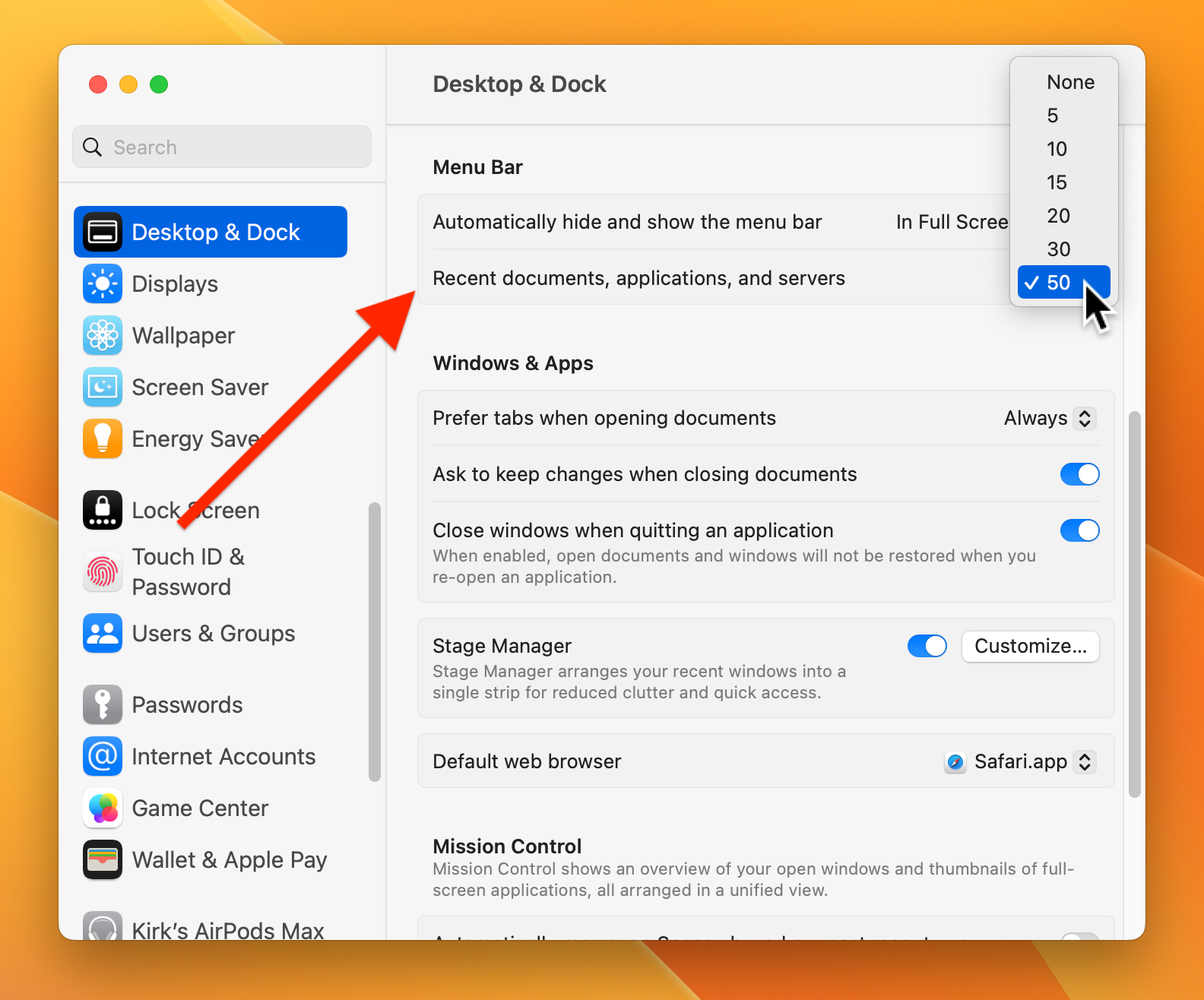
6. Open Files from a Dock Icon
If you click and hold an app icon in your Mac’s Dock, you’ll see that there’s a menu showing recent items, if the app can open files. Select a file to open it with that app. As above, this menu only contains a limited number of files. Some apps, such as Calendar, Reminders, and Notes can’t open files, but manage data directly.
7. Open Files from the Recent Items Menu
If you choose the Apple menu, then Recent Items, you’ll see a list of recent apps, documents, and servers. Select a file from the Documents section, and it opens in its assigned app. As above, you can control how many items display in this menu in the General preferences. The difference between this and the Open Recent menu in apps is that this menu shows recently opened files from all apps, whereas each app also has its own Open Recent menu that only shows its own files.
8. Use Spotlight to Open Files
You can use Spotlight to search for files — by their name, or even by keywords in their content — and open them from the results. Just use the arrow keys to select a file and press Return, or double-click it.
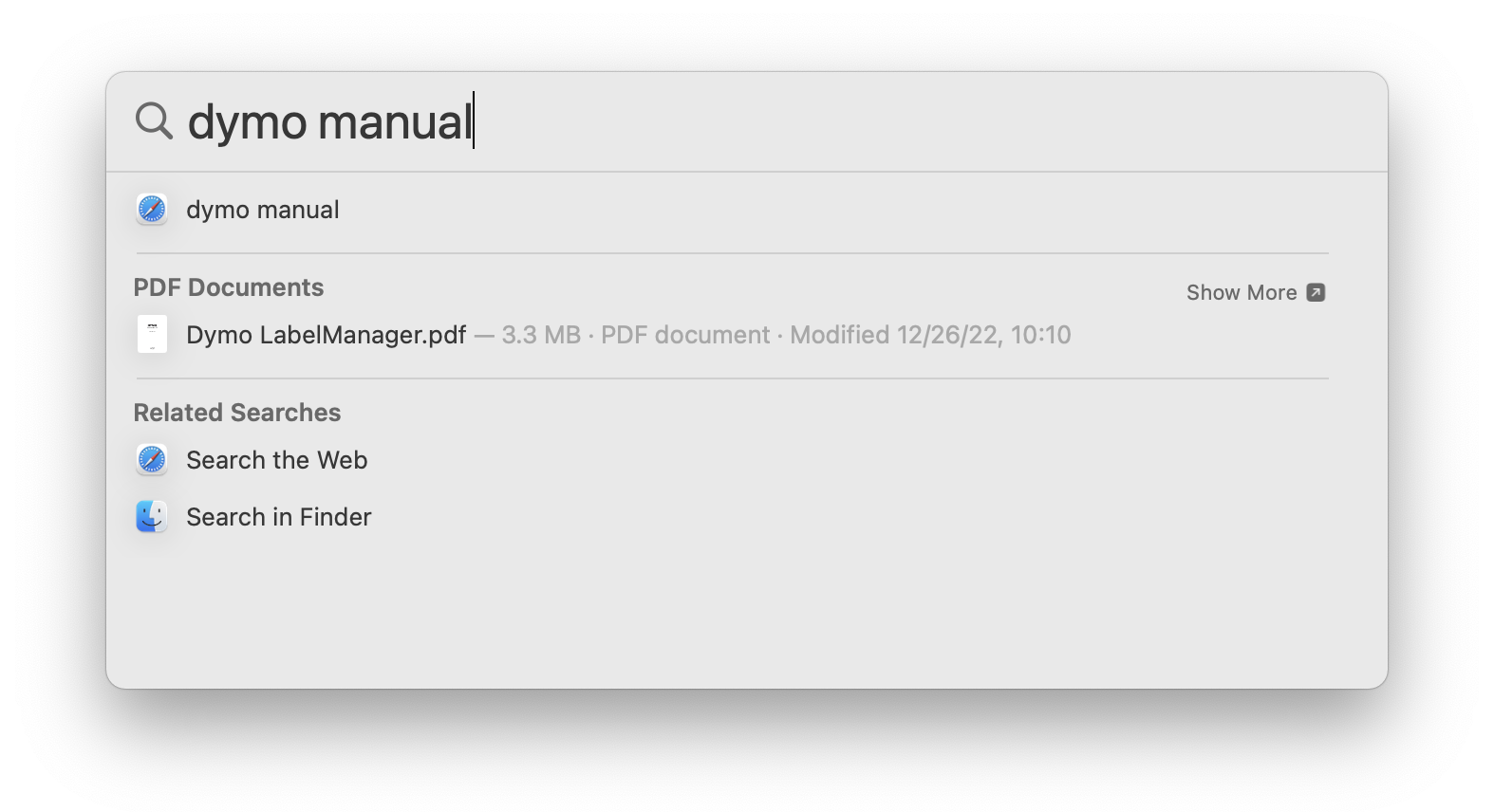
If you want to see a file you’ve found in Spotlight, in its location, press Command-Return, and a new Finder window opens with that file highlighted.
9. Open Files from the Dock
If you have added files to the right-hand section of the Dock (or the bottom, if you position the Dock on either side of your screen), a single click will open that file.
And if you have folders in that part of the Dock, click and hold a folder icon to see a list of the files it contains. Select one to open it.
10. Use Quick Look to Open Files
If you select a file in the Finder then press the Space bar, you’ll see a preview of the file. If you then want to open the file, you can click the Open With… button at the top of the preview window. This will show the name of the app that is assigned to open that file type, and it will say, for example, Open With Preview.
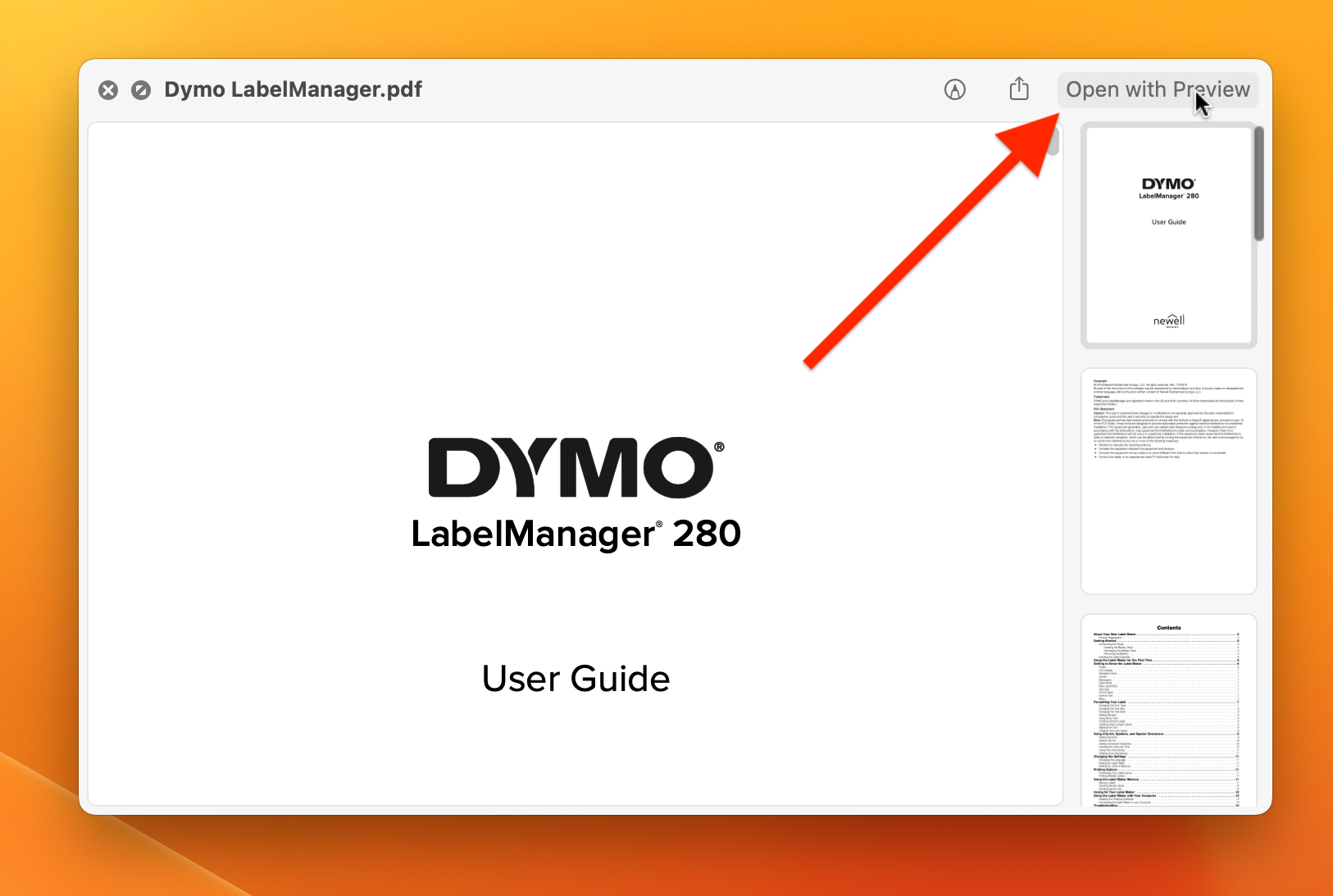
11. Right-Click to Open Files
If you right-click a file in the Finder, you’ll see two menu items: Open and Open With. The former lets you open the file with the app associated with its file type, and the latter displays a sub-menu containing all the apps that can open that file. This is the best way to open a file with an app other than the one that opens its file type by default.
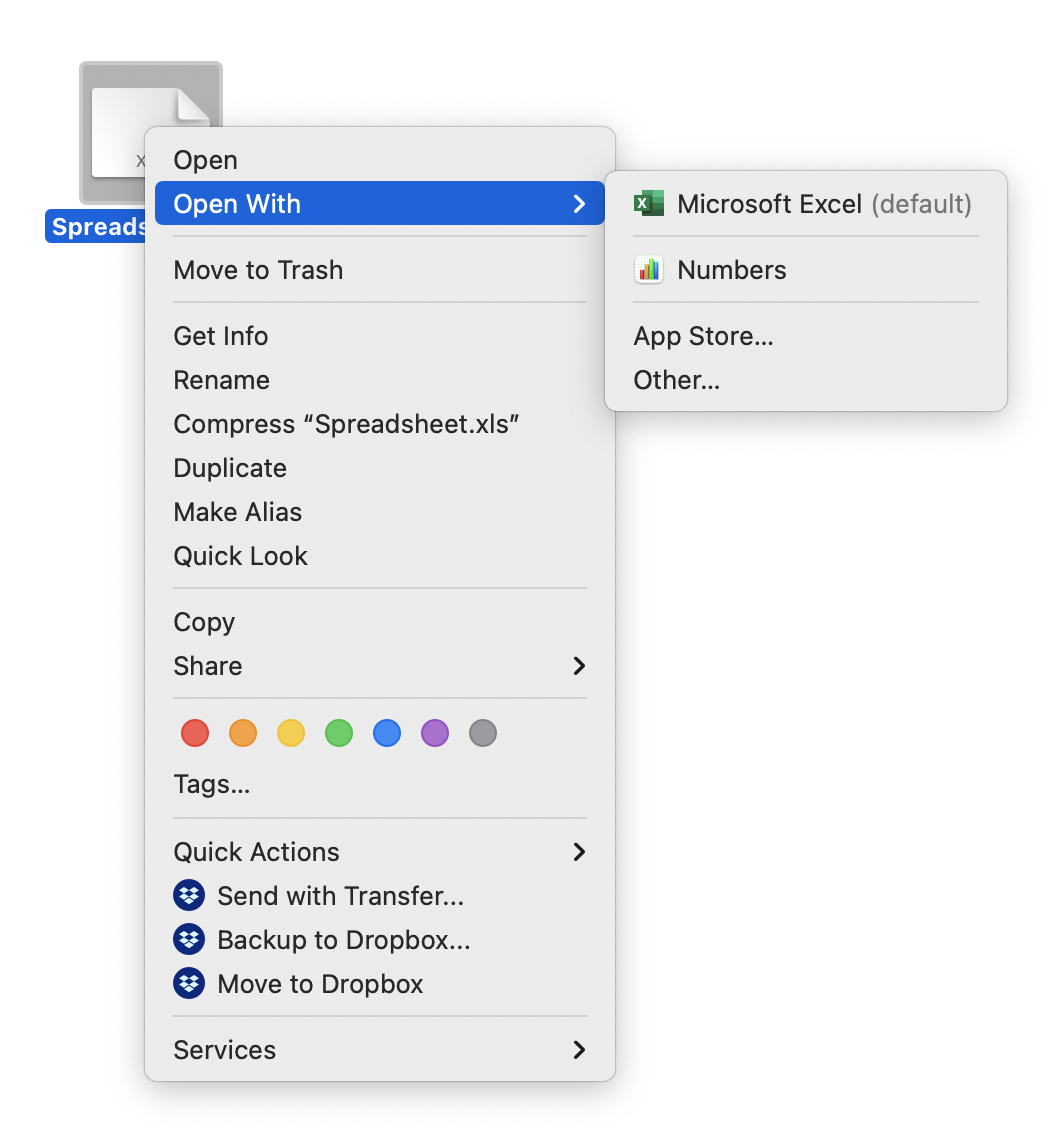
You can also select a file and choose File > Open With to access the same sub-menu. Note that in some cases, you may have a large number of apps that can open files, for types such as PDF, JPEG, etc.
12. Open Files From the Command Line
If you use the command line, you probably already know that you can open files in the Terminal app. Just type the open command, followed by a space then the full path to the file, then press Return. Your command should look like this:
open /Users/kirk/Documents/My\ Folder/My\ File
Note that if there are spaces or other special characters in the file path, you may either need to “escape” them by prepending a backslash character (\), or alternatively you can put the whole path in quotation marks:
open "/Users/kirk/Documents/My Folder/My File"
Thankfully, there’s a much quicker way to do this, if you can see the file in the Finder. Type open, then a space, then drag the file onto the Terminal window. This automatically fills in its whole file path, including backslashes where required.
After you’ve entered the command, press the Return or Enter key on the keyboard to open the file with its associated app.
Bonus Tip: How to Associate a File Type with an Application
I mentioned above that file types are associated with applications. For each file type — such as .doc, .xls, .txt — there is one and only one app on your Mac that will open the files automatically, such as when you double-click files. But you can change this.
Take as an example .txt files. By default, they open with Apple’s TextEdit. But you may have a preferred text editor and want all these files to open with this app.
Select any .txt file in the Finder, then press Command-I. In the Open With section, you’ll see a menu showing that TextEdit is the default app (unless you’ve already changed this for .txt files). Click the menu and select your preferred text editor, then click Change All. The Mac will remember to open all .txt files in your selected app.
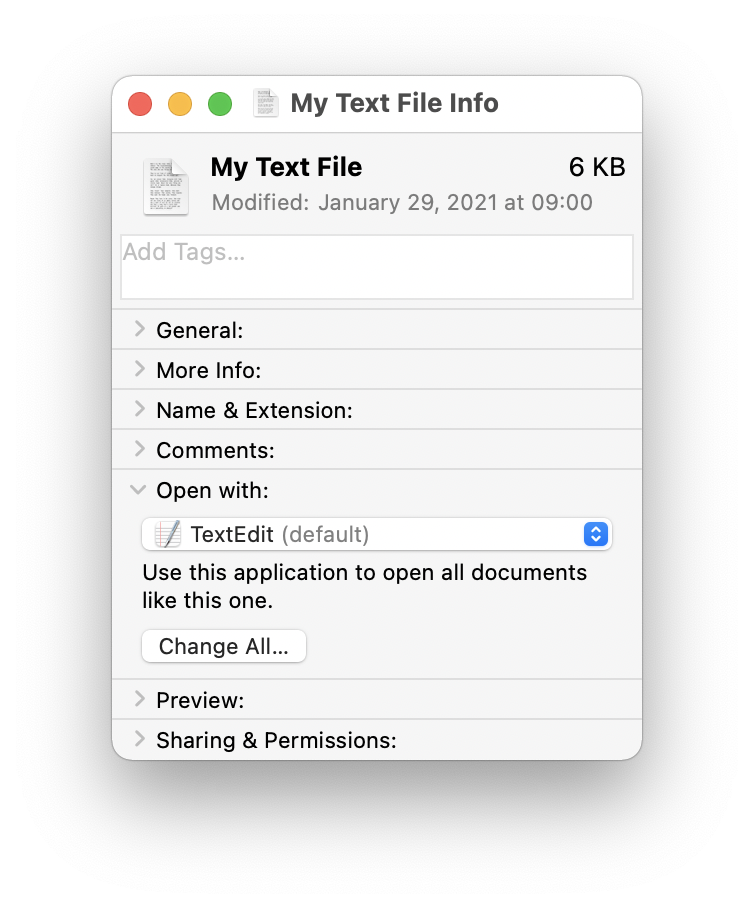
Note that you will still be able to open these files with other apps, by dragging them onto app icons, from the Open With contextual menu, and so on. Give these tips a try and you’ll soon discover how they will make you more productive!
How can I learn more?
 Each week on the Intego Mac Podcast, Intego’s Mac security experts discuss the latest Apple news, including security and privacy stories, and offer practical advice on getting the most out of your Apple devices. Be sure to follow the podcast to make sure you don’t miss any episodes.
Each week on the Intego Mac Podcast, Intego’s Mac security experts discuss the latest Apple news, including security and privacy stories, and offer practical advice on getting the most out of your Apple devices. Be sure to follow the podcast to make sure you don’t miss any episodes.
You can also subscribe to our e-mail newsletter and keep an eye here on The Mac Security Blog for the latest Apple security and privacy news. And don’t forget to follow Intego on your favorite social media channels: ![]()
![]()
![]()
![]()
![]()
![]()
![]()